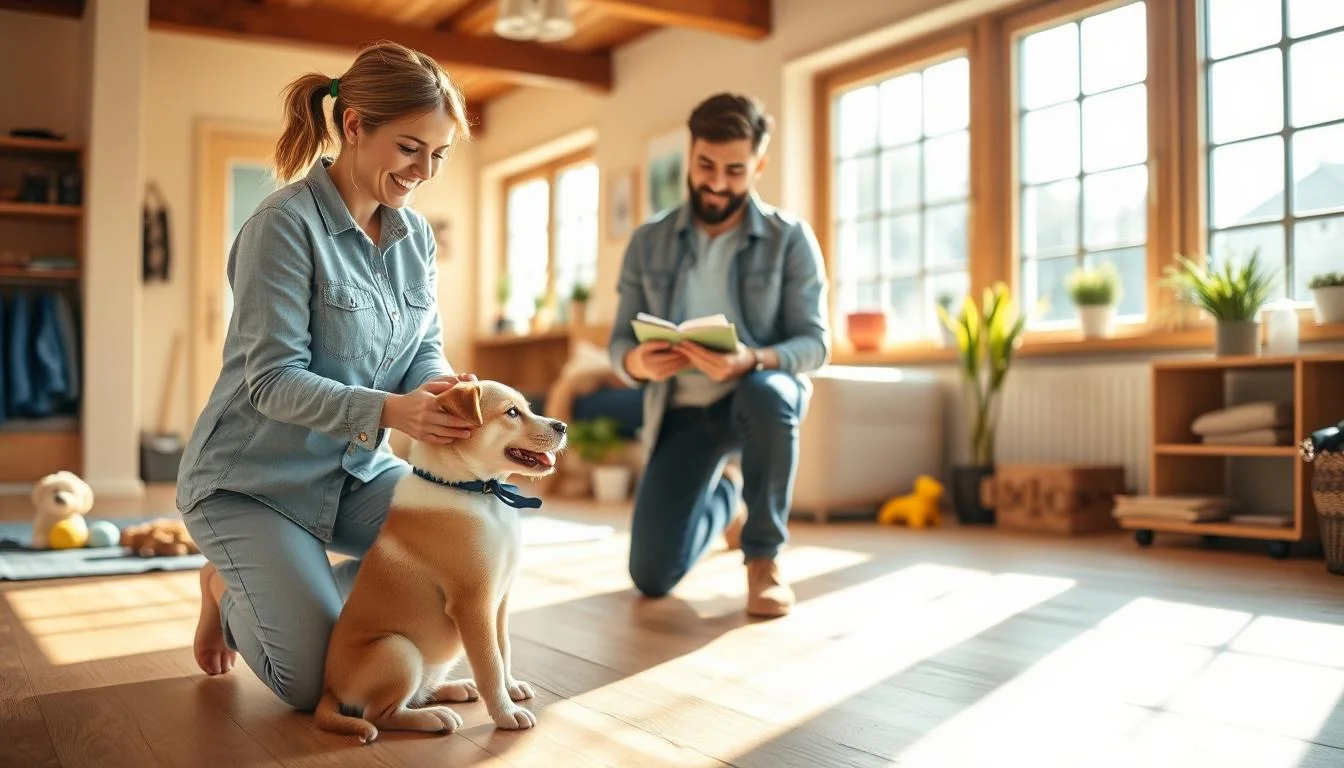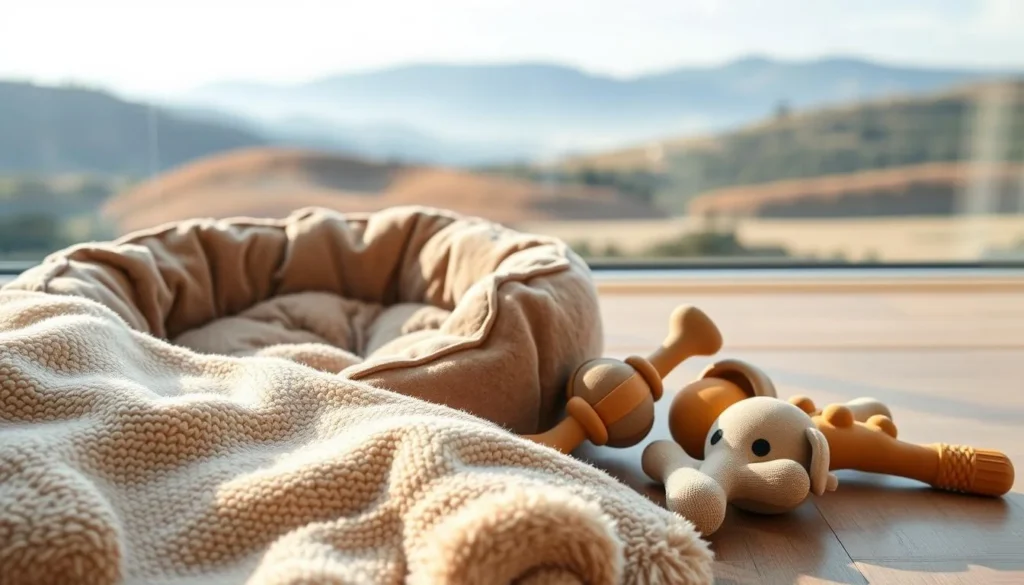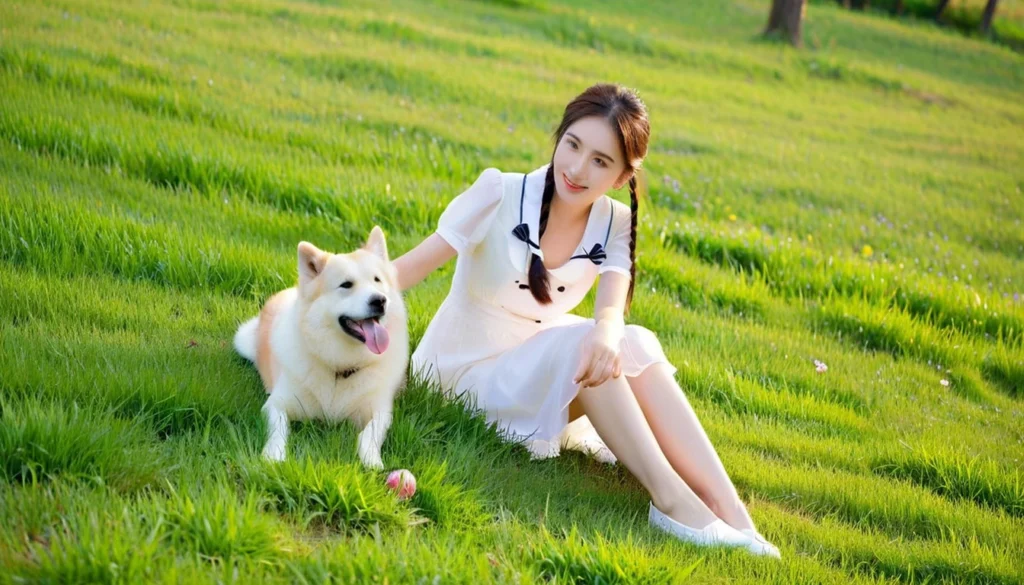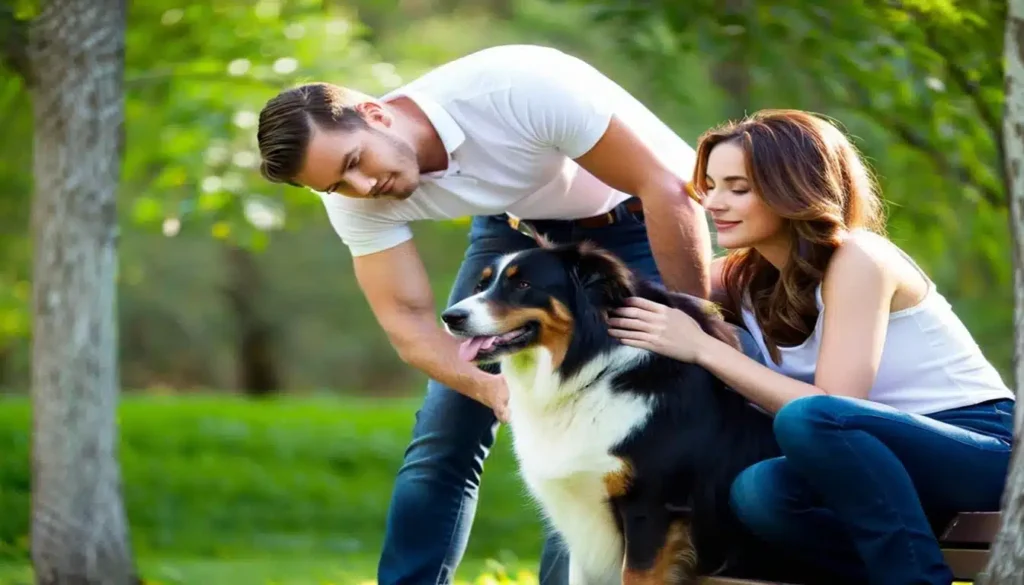I remember the first night with my new puppy. The tiny sighs from the crate, the mess, and the mix of joy and responsibility. If you're getting a new dog, you might feel the same. Planning, patience, and simple routines make the first weeks easier.
This guide offers practical tips for starting dog training and being a first-time owner. I'll cover a new puppy checklist, what to expect, and why a vet exam is crucial. It's especially important for puppies and senior dogs.
Training choices affect your bond with your dog. I use reward-based methods and avoid harsh tools like prong or shock collars. Experts say these can cause fear, anxiety, or aggression, harming trust.
Keep reading for steps on preparing your home, training basics, routines, behavior management, and age-specific tips. I aim to share personal and practical advice for first-time owners with confidence.
Key Takeaways
- Plan ahead: use a new puppy checklist and schedule a vet exam early.
- Start with gentle, reward-based dog training starting methods.
- Avoid aversive tools—prioritize safety and the human–dog bond.
- Expect dogs to take days to months to settle; patience is key.
- This guide offers step-by-step, practical tips for first-time dog owners.
Preparing for your new dog: readiness, space, and budget
Getting a dog is a big step. It requires thinking about daily time, energy, and long-term commitment. I need to decide if I can train, walk, and socialize a dog every day.
If my work or travel schedule is tight, I need to plan who will cover walks, feeding, and training sessions.
Next, I check my living space and family dynamics. I look at indoor room, yard access, and who lives with me. Children, roommates, and other pets shape how I introduce a dog.
For the first months, I limit roaming to safe zones. Gates and pens help me control the environment while I focus on basic manners and housetraining.
I review hazards from a pup’s-eye view. Low furniture, cords, cleaning supplies, and houseplants can be risky. I plan a crate or pen for safe rest and a quiet sleep area stocked with familiar-smelling bedding.
Cost planning matters. First-time dog budgeting begins with immediate needs: collar, leash, bowls, crate, and an initial vet exam. I keep the dog on its current diet at first to avoid tummy upset, then transition slowly after a month with vet guidance.
Ongoing expenses include food, routine vet care, vaccinations, grooming, toys, and replacement supplies. Puppies and seniors often need more frequent vet visits. I set aside an emergency fund for unexpected care and consider pet insurance or a dedicated savings buffer.
Below I present a practical cost comparison to help estimate short- and long-term spending. The table shows typical first-year and annual costs so I can plan realistic first-time dog budgeting and align expectations with my lifestyle.
| Expense | Typical First-Year Cost (USD) | Typical Annual Cost After Year One (USD) | Notes |
|---|---|---|---|
| Initial vet exam & vaccinations | $150–$400 | $80–$200 | More for puppies or seniors; includes parasite prevention |
| Food and treats | $300–$800 | $250–$600 | Premium diets cost more; treats for training add up |
| Crate, bed, bowls | $80–$300 | $20–$50 | One-time buys; upgrade as dog grows |
| Collar, leash, harness | $20–$100 | $10–$40 | Replace worn gear; choose safe, comfortable options |
| Training classes or behavior help | $50–$400 | $0–$300 | Group classes cost less; private sessions cost more |
| Grooming | $0–$600 | $0–$500 | Breed and coat type determine frequency and price |
| Emergency vet / unforeseen care | $200–$2,000+ | $200–$2,000+ | Set aside savings or consider insurance |
| Toys, enrichment, replacements | $50–$250 | $30–$150 | Rotate toys to keep mental stimulation high |
Finally, I match chosen expenses and time with the dog training starting age I expect. Puppies need extra socialization and supervision. Adults may arrive with some training, but they still need routine and patience.
Preparing supplies, planning my schedule, and doing first-time dog budgeting before arrival makes the first weeks smoother for me and kinder for the dog.
dog training starting: choosing where and how to begin
Starting to train a new dog can be daunting. I focus on small, achievable steps that fit my life and the dog's needs. This makes the process feel less overwhelming and even fun.
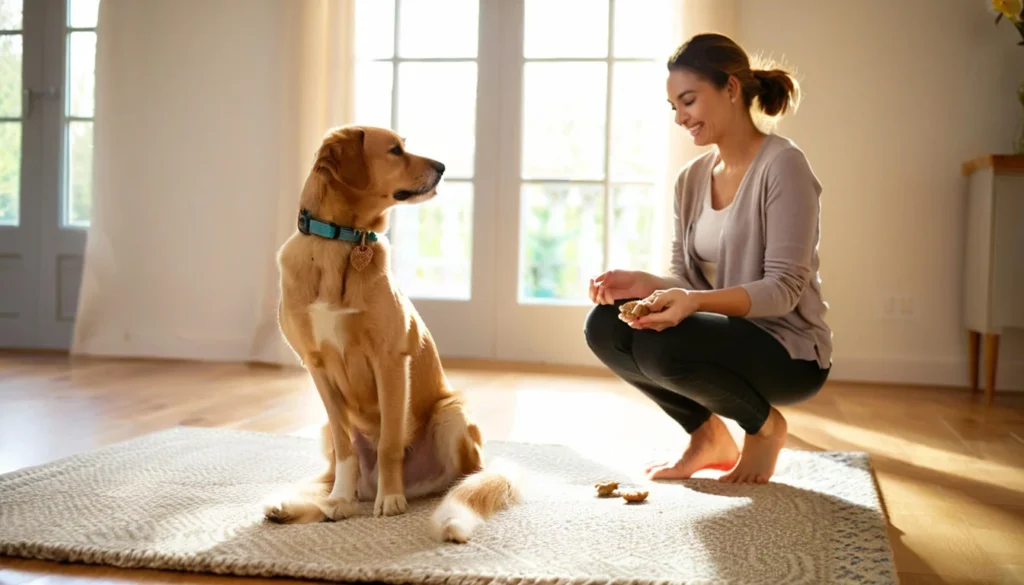
Choosing the right approach depends on the dog's age and background. Puppies need to learn social skills and potty habits. Adult dogs might need to remember old rules and build trust. Senior dogs may need gentle exercises and medical checks.
Deciding between puppy vs adult dog training approaches
With puppies, I focus on socialization and short training sessions. I use play and treats to teach good habits. Adult dogs need a review of their behavior and a structured approach. I keep training sessions short and consistent.
For senior dogs, I consult with a vet and adjust exercises to their mobility. This ensures they stay comfortable and safe.
Setting realistic goals for the first week, month, and six months
In the first week, I aim for the dog to settle in, go for supervised potty breaks, and start bonding. I keep training sessions short and repeat them often.
By the first month, I want the dog to learn basic commands like sit and walk on a leash. I also expect more consistent potty habits. I limit their freedom in the house and track their progress daily.
At six months, I aim for the dog to reliably follow commands in various situations. I also want to see less chewing and a stable routine. I break down each goal into smaller steps and track progress weekly.
Choosing reward-based methods as my foundation
I use positive reinforcement and reward-based training as my foundation. I reward good behavior with treats, praise, and play. I avoid using aversive tools to keep the training safe and build trust.
I look for trainers and classes that focus on reward-based training. This allows me to follow a clear plan and adapt it to the dog's personality and my schedule.
| Stage | Key Focus | Typical Goals | Training Style |
|---|---|---|---|
| Puppy (8–16 weeks) | Socialization, potty timing, bite inhibition | Routine feeding, supervised outings, short sits | Play-based, reward-based training |
| Adolescent (4–12 months) | Impulse control, leash manners, continued socialization | Improved recall, longer sits, calmer walks | Consistent reward-based training with structure |
| Adult (1–7 years) | Relearning rules, confidence building, behavior adjustment | Reliable basic cues, house manners, steady routine | Assessment-led reward-based training |
| Senior (7+ years) | Medical checks, mobility-friendly exercises, comfort | Gentle cue work, safe walk plans, adapted routines | Low-impact, reward-based training with vet guidance |
Setting up a safe, dog-friendly home and sleeping area
I plan a calm spot for my new dog to feel secure. A safe sleeping area helps with rest and reduces stress. I choose a quiet corner near family activity, so the dog hears normal sounds but isn't overwhelmed.
Crate setup and why a safe den helps transition
I recommend crate training as a gentle introduction. A properly sized crate becomes a den where the dog can relax. This speeds up potty training and lowers anxiety.
I use soft bedding and a chew-safe toy to make the crate inviting. I place the crate in a spot that's not too busy or too quiet. This helps the dog settle while staying near family life.
Creating a quiet sleep zone with familiar-smelling items
I bring a blanket or toy with the dog's scent from the shelter or previous home. Familiar-smelling items calm puppies and adult dogs alike. I keep the sleep zone dim and draft-free, with clean and comfy bedding.
When nights are noisy, I use a low-volume white noise or a ticking clock. This small change often improves sleep and supports dog training progress.
Puppy-proofing rooms and using gates for controlled access
I do a pup's-eye-view sweep before letting a dog roam. I tuck away shoes, secure trash, and hide electrical cords. I remove toxic houseplants and store cleaning products safely.
For controlled freedom, I install gates and use exercise pens. Gates reduce accidents while I supervise learning. Puppy-proofing protects the dog and gives me peace of mind during training sessions.
Establishing routines: feeding, potty breaks, and walks
I suggest a simple, predictable daily plan for a new dog. Routines calm dogs and help them learn faster. A clear rhythm for meals, potty trips, and walks sets expectations for both of us.
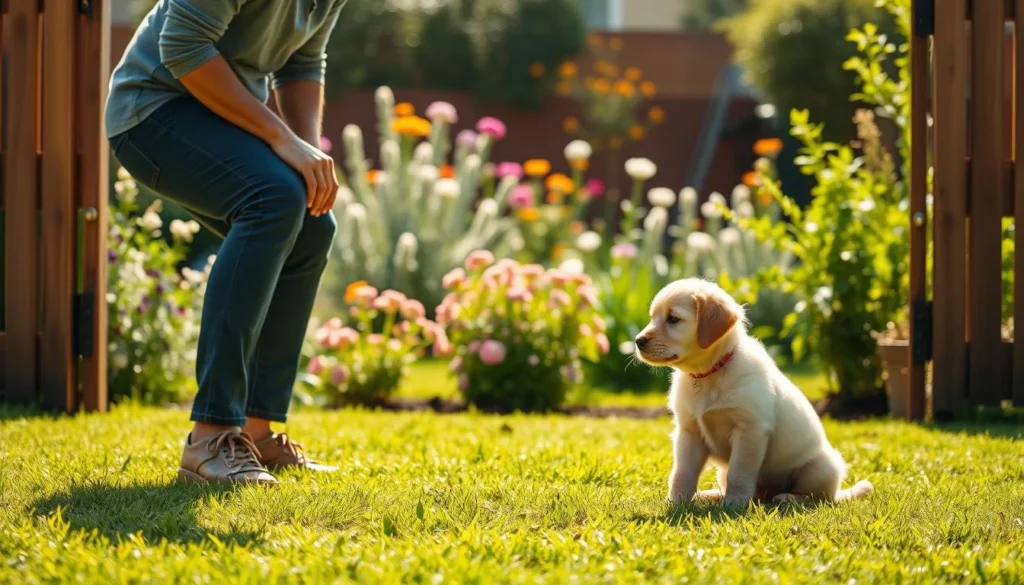
Consistent feeding times and gradual diet transitions
I use a consistent feeding schedule to regulate digestion and bathroom timing. Feeding at the same times each day makes elimination more predictable. I keep a dog on their current food when they arrive and wait about a month before changing brands.
I switch foods slowly over 7–10 days, mixing increasing amounts of the new kibble with the old. I ask my veterinarian if the dog has a sensitive stomach. Staggered changes cut the risk of diarrhea and keep training on track.
Potty training strategies for outdoor success
For dogs who are not yet house-trained, I schedule frequent, short trips outside. I take the dog out after eating, after naps, after play, and first thing in the morning. I use crate time to limit unsupervised access and reduce accidents.
When the dog eliminates outdoors I give immediate praise and a small treat. I stay calm during accidents and clean them with an enzyme cleaner. Patient repetition helps the dog learn where to go during dog training potty outside and to dog training potty train reliably.
Scheduling walks for exercise, mental stimulation, and routine
I plan walks at regular times to support training and energy management. A set dog walk routine in the morning and evening gives exercise and mental enrichment. I include short sniff breaks on every outing because sniffing is low-cost enrichment that reduces anxiety.
Until recall and leash manners are solid, I keep the dog under close supervision. Leash control and predictable walks help the dog settle, sleep better, and respond faster during training sessions.
Basic obedience foundations: sit, stay, release, and recall
I start with a simple plan to keep learning safe and fun. Early successes boost our confidence. I focus on clear cues, short sessions, and rewards that make the dog want to do it again.
I teach in a quiet room first. For dog training sit and stay, I mark the first correct sits with a click or word and follow with a tasty treat. I reward tiny steps, like an upright head, before expecting a full sit. Sessions last five minutes for a puppy and up to ten for an adult.
Next, I slowly increase time and distance. I ask for one breath, then two, then a few seconds more. I change my position a little, then step back. If the dog breaks position, I reward the return and drop the duration slightly to keep success high.
I teach a clear release cue early. A distinct dog training release command like "OK" or "Free" tells the dog when the hold is over. I reward the dog immediately after the release so they see letting go leads to good things. This practice reduces confusion between dog training stay vs wait in daily life.
I treat stay and wait as different tools. I use stay when I need the dog to hold a position and wait when I want controlled movement, such as at a doorway. I teach both so the dog understands context and safety becomes predictable.
Recall training follows the same stepwise pattern. I call the dog in a low-distraction area with a happy voice. I reward coming with a high-value treat and praise that makes the return worth the effort. I repeat often and keep the reward higher when distractions grow.
Until recall is solid, I use a long line or fenced area. That keeps practice safe while I raise the criteria. I mix rewards, petting, and short play so the dog chooses me over distractions.
I use this quick reference to stay consistent:
| Skill | First Step | Progression | Safety Tip |
|---|---|---|---|
| Sit | Mark first correct sit, give treat | Increase duration, add mild distractions | Use high-value treats for clarity |
| Stay | Ask for brief hold, reward return | Lengthen hold, add distance slowly | Never release with a harsh tone |
| Release | Introduce a single word like "OK" | Practice linking release with reward | Always reward right after the cue |
| Recall | Call in quiet area, reward immediately | Gradually add distractions and distance | Use leash or long line until reliable |
Leash and heeling work for pleasant walks
I enjoy walks that are calm for both me and my dog. The right gear and short training sessions make leash time better. I teach polite walking while letting my dog sniff and explore.
Choosing gear: front-clip harnesses vs collars
I use a front-clip harness for dogs that pull. It redirects momentum without hurting the throat. Collars are good for ID tags and gentle cues for small dogs. I avoid choke or prong collars to protect the neck and encourage learning.
Dog training heeling exercises to reduce pulling
I teach attention cues and short loose-leash steps first. I take one to three steps, reward the dog for staying close, and do it again. If the dog pulls, I stop or change direction to avoid rewarding pulling.
Allowing sniff time while training polite walking behavior
I give sniff breaks as rewards after heeling steps. Sniffing is good for dogs and makes walks fun. I set rules: sniffing is okay when the leash is loose and I control the pace. This keeps walks enjoyable while training to reduce pulling.
Managing and preventing behavior problems with calm methods
I help owners reduce tension and keep dogs safe with calm steps. We start with low-stress management to stop harmful interactions. Then, we teach alternative behaviors so the dog can earn rewards.
Using reward-based approaches for behavior problems
I focus on reward-based behavior modification. This replaces unwanted actions with useful skills. I use praise, treats, and play to mark the behaviors I want to see more of.
Science shows that force can lead to worse outcomes. So, I avoid correction tools that raise stress. Instead, I set simple rules and reinforce tiny gains.
Short, frequent sessions help dogs learn without frustration. We track progress and raise criteria only when the dog succeeds regularly.
Counter-conditioning and management for fearful dogs
I use counter-conditioning to change a dog’s emotional response to triggers. This means pairing a scary stimulus with very high-value food. This way, the dog expects something pleasant instead of danger.
For many dogs, mature cheddar, cooked chicken, or commercial super-treats work well. Management stays in place while training proceeds. We create distance, use barriers, and control the environment to prevent repeated fear responses.
When to seek professional help and what to look for in a trainer
I advise seeing a veterinarian if behavior changes suddenly. Pain and medical issues often drive new problems. For fear, aggression, or long-term patterns, hire a positive reinforcement trainer who uses force-free methods.
Look for credentials such as CPDT-KA, IAABC, or a boarded veterinary behaviorist. Ask for written plans, references, and clear behavior-modification steps. A solid professional will include management, counter-conditioning, and reward-based behavior modification in their program.
| Situation | Immediate action | Suggested expert |
|---|---|---|
| New, sudden aggression | Visit veterinarian; avoid punishment; manage interactions | Veterinary behaviorist |
| Ongoing fear of people or dogs | Start distance-based management; begin counter-conditioning | Certified force-free trainer (CPDT-KA or IAABC) |
| Resource guarding or food aggression | Use management during feeding; implement structured trading | Experienced positive reinforcement trainer |
| Reactive leash behavior | Reduce triggers; teach alternative focus and calm walking | Reward-based behavior modification specialist |
Food-related challenges: preventing and addressing food aggression
I help owners spot early signs of food tension and set safe routines. Small changes in feeding can ease stress and prevent incidents. I focus on gentle, consistent steps to protect everyone while teaching better mealtime behavior.
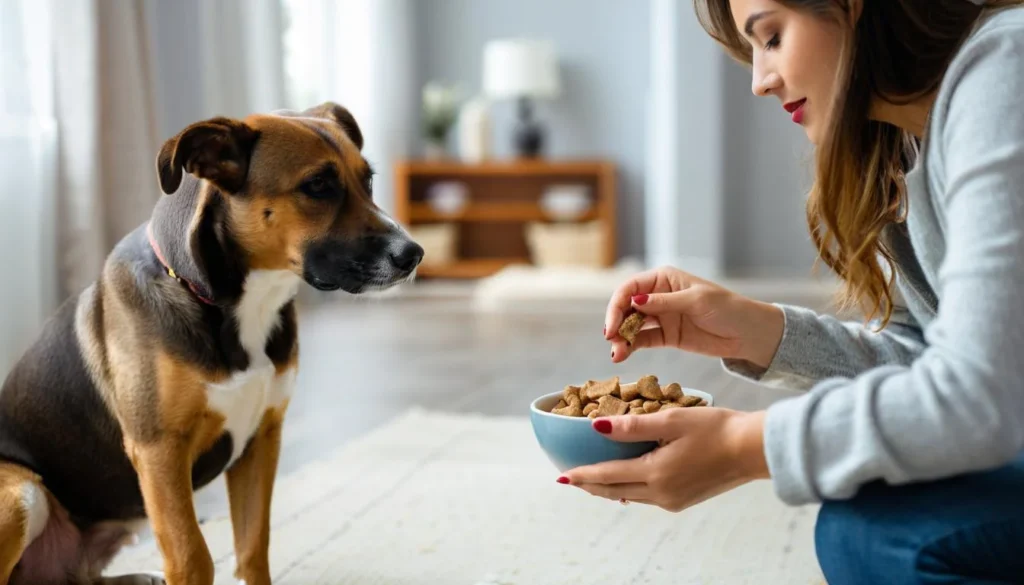
Recognizing warning signs and practical management
I teach clients to watch for stiffening, hard stares, low growls, or snapping near food. These signs mean the dog is guarding resources. I suggest feeding dogs in separate areas and using crates or baby gates during meals to prevent fights. Always supervise when multiple pets share a home.
Step-by-step desensitization and trading technique
I start desensitization at a distance where the dog stays relaxed. I toss high-value treats near the bowl to teach the dog that my approach means something good. I use a trading technique to teach the dog to voluntarily release items. I offer a favorite treat, say “trade,” take the item, then reward trust with something even better.
Safe feeding practices and introducing new pets
I set clear safety rules during feeding and when new animals meet. I suggest separate feeding stations and scheduled mealtimes to reduce competition. I recommend slow, supervised introductions with distance and positive reinforcement. If a dog shows severe food aggression, I refer to a veterinary behaviorist or a certified trainer for a safe behavior-change plan.
| Issue | Immediate Action | Training Step | When to Seek Help |
|---|---|---|---|
| Stiffening or staring at bowl | Give space; do not grab food | Move back to comfortable distance; reward calm | If signs persist or escalate |
| Growling when approached | Stop approach; note triggers | Use trading technique with high-value treats | If growling becomes frequent |
| Snapping or lunging | Ensure safety; separate pets immediately | Work with a trainer on desensitization plan | Any bite or repeated snaps |
| Multiple pets competing | Feed in separate rooms or crates | Teach individual cues and timed feeding | If fights occur during meals |
Step-by-step training plans and realistic expectations
I break training into small steps for my dog's success. Short sessions and steady progress help lessons stick. I prefer short work bursts that fit into daily life, keeping motivation high.
Breaking behaviors into small, achievable steps
I use shaping to teach new skills. For a sit, I mark the first nose dip, then the lower rump, then the full sit. For recall, I reward short distances, then increase range as reliability grows.
I keep sessions to 5–10 minutes, several times a day. This approach supports a realistic training timeline and keeps frustration low for both of us.
Tracking progress and adjusting criteria as skills improve
I keep a simple log: date, context, reinforcement, and success rate. This helps me track training progress and spot patterns fast.
When a behavior is consistent at 80–90%, I raise criteria slowly. I add mild distractions, longer duration, or more distance and only increase challenge when the dog remains successful.
Balancing training sessions with play, rest, and socialization
I balance work and fun to protect motivation. Training should not dominate the day. I mix short practice with play breaks and scheduled rest.
Socialization is planned and positive. Puppy classes or local training groups help me practice around other dogs and people without overwhelming my dog.
| Focus | Example Steps | Session Length | Progress Marker |
|---|---|---|---|
| Basic sit | Mark nose dip → mark rump lowering → mark full sit → add duration | 5–7 minutes, 3 times/day | 3 consecutive successful sits in distracting area |
| Recall | Reward approach at 3 ft → 6 ft → 15 ft → off-leash short call | 5 minutes, multiple reps | Consistent returns at 15 ft, 4 of 5 trials |
| Stay | Mark brief hold → increase duration → add distance → add distractions | 5–10 minutes, 2–3 times/day | Maintains position for target time in new location |
| Socialization | Meet one calm dog → short supervised play → small groups → busy park visits | 10–15 minutes, once daily | Calm interactions and tail-up body language |
Age considerations and starting age guidance
I help owners understand how age affects training. Choosing the right age for dog training is key. It sets achievable goals and prevents frustration. Here are steps for puppies, teens, adults, and seniors to match training to their needs.
How training differs by life stage
Puppies need short, frequent training sessions. These should include basic commands, potty training, and learning not to bite. It's also important to socialize them gently to help them grow into calm, confident dogs.
Teenage dogs test boundaries. I suggest setting clear rules and using positive reinforcement to guide them. They need to learn to follow rules and respect boundaries.
Adult dogs have habits that are hard to change. I use positive reinforcement, patience, and clear rules to help them. Adults do well with predictable routines and rewards.
Socialization windows and exposures
The early weeks are crucial for socialization. I recommend short, positive interactions with people, dogs, and other stimuli. This helps build confidence without causing fear.
For any fear, I use counter-conditioning. This involves pairing new things with treats or play. Then, I slowly increase the difficulty. Older puppies and teens need varied experiences to avoid losing what they've learned.
Adapting methods for older dogs
Training older dogs needs to be gentler and consider their health. I make sessions shorter and use low-impact exercises. For dogs with arthritis or mobility issues, I switch to mental games instead of physical play.
Always check with a vet before starting new training. They can help with any health concerns. Small changes like ramps or soft bedding make training easier and kinder for older dogs.
Conclusion
I've shared key tips for a first-time dog owner to start training well. First, get your home ready and plan your budget. Make sure your dog has a safe place to sleep and a crate. Keep their diet the same until the vet checks them.
Book a vet visit and stick to a routine for feeding and potty breaks. This makes the early days easier.
Use positive training methods and teach in small steps. Start with sit, stay, recall, and leash training. Short, frequent training sessions are best. Let your dog sniff on walks and use trades for food.
Keep track of how your dog is doing and adjust training as needed. Always focus on socialization and safety.
Remember, it takes time for your dog to adjust. Be patient, as it can take weeks or months. If you need help, look for positive trainers or local classes. Always check with your vet for any health or behavior issues.
This guide is to help you start your dog's training journey right. It offers clear steps you can follow today.

